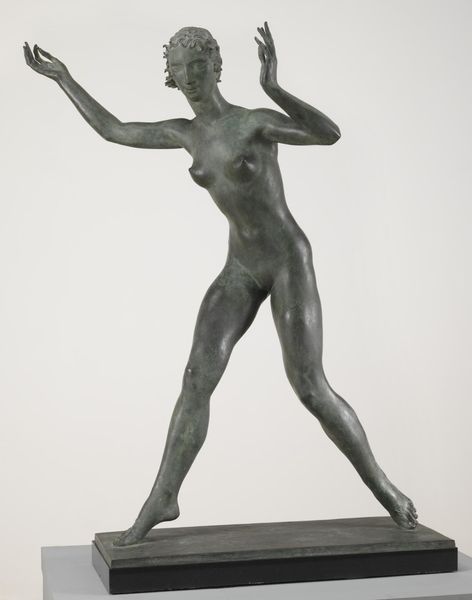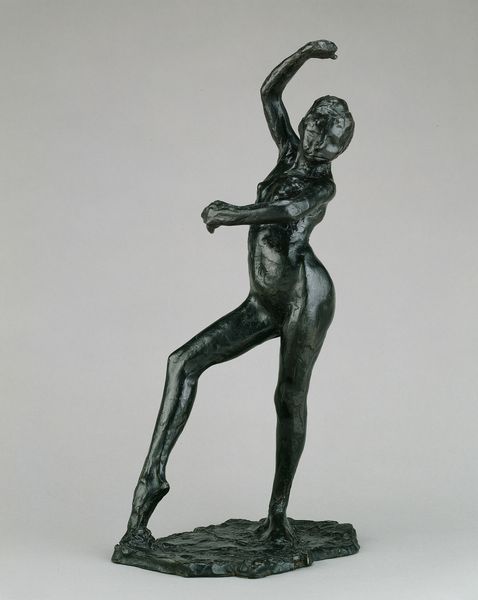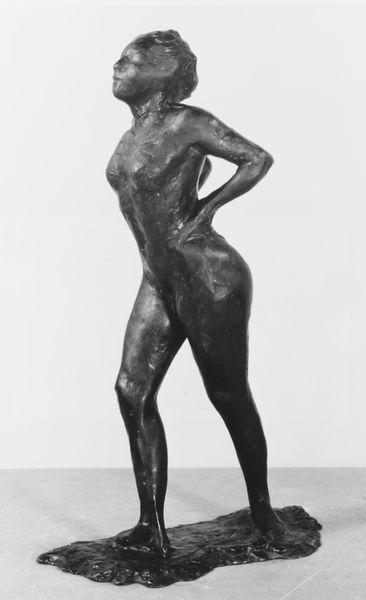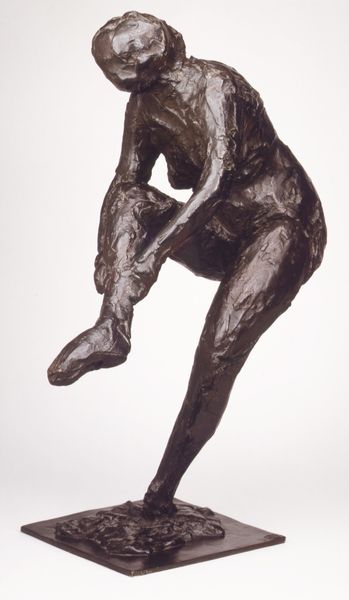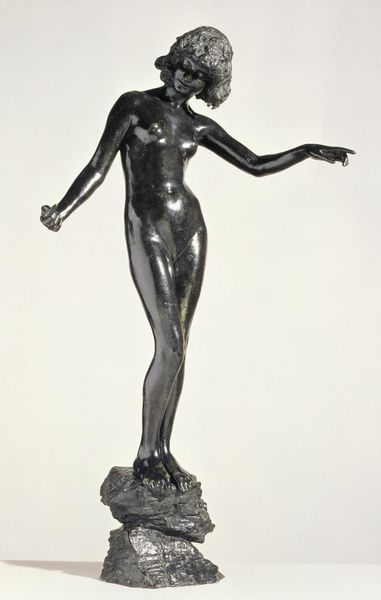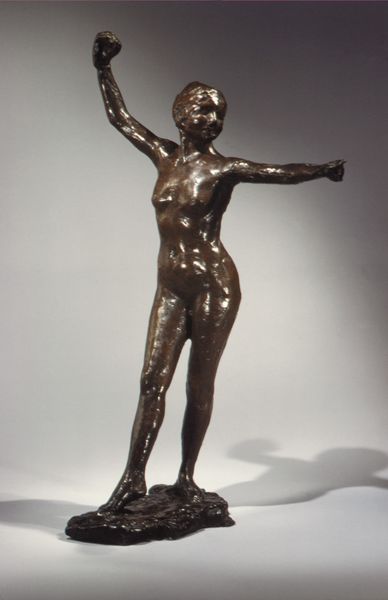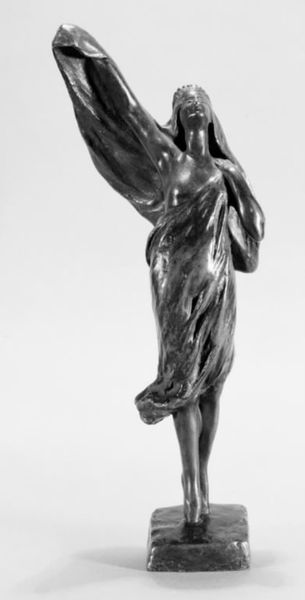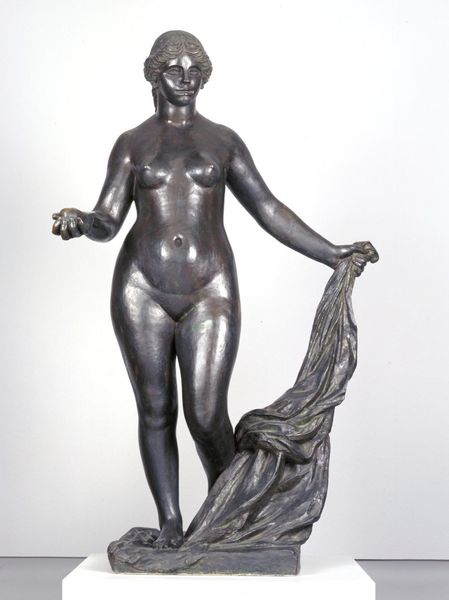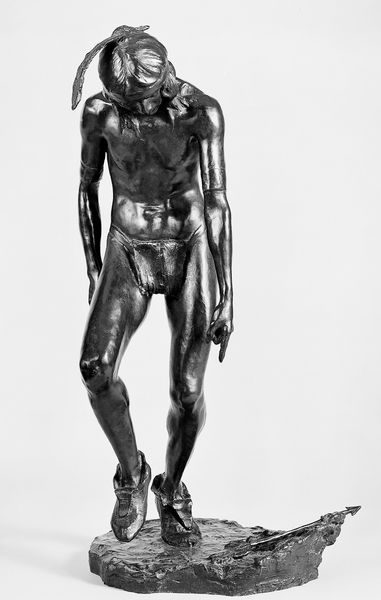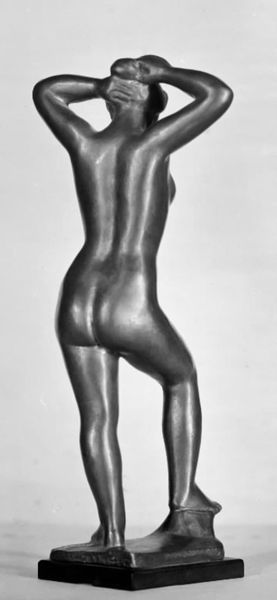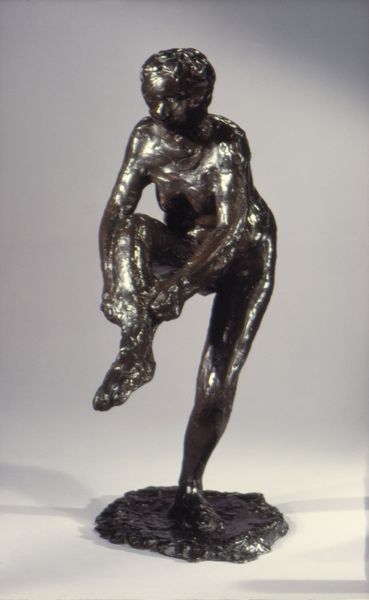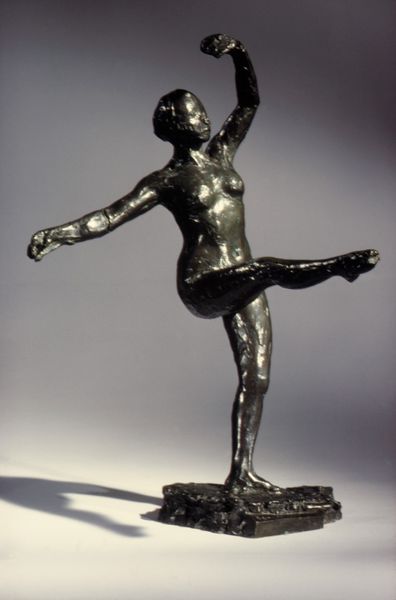
bronze, sculpture
#
impressionism
#
sculpture
#
bronze
#
figuration
#
female-nude
#
sculpture
#
decorative-art
#
nude
#
male-nude
Dimensions: Overall: 19 × 8 1/4 × 13 3/4 in. (48.3 × 21 × 34.9 cm)
Copyright: Public Domain
Curator: Before us stands "Tendu Derrière," a bronze sculpture crafted by Edgar Degas between 1877 and 1900. Its subject is a female dancer in a stretching pose. Editor: The immediate impact is one of vulnerability. The figure's pose feels precarious, almost imbalanced. It provokes questions of the labor expected of young ballerinas, the cost of their art form. Curator: Precisely. Degas was fascinated by the ballet, a world steeped in rigid social structures and artistic convention. He frequently depicted dancers both onstage and in unguarded moments, revealing the rigorous discipline required. Editor: The pose is so crucial here, that almost agonizing reaching. Consider that the French title, "Tendu Derrière," translates to "Stretched Behind". What might the power dynamics have been between male artists observing and female dancers posing? And to what extent are we implicated when gazing at the piece now? Curator: Degas’s working methods were unconventional; this bronze, for example, was cast posthumously from a wax model. This complicates our understanding of intention. Did he ever envision it as a finished sculpture to be exhibited, or merely a study? Editor: That’s the crux of it isn't it? Regardless, the artwork participates in a historical system where female bodies were positioned as the ideal subject. This is especially reinforced by the artist’s technique of accentuating the muscular strain and projecting onto the figure's posture. Curator: You make an excellent point about the gaze. Degas, though celebrated, faced criticism during his lifetime and even more intensely recently for his potential voyeurism. Yet he does document a significant moment in art history. Editor: I agree; we need nuance, something far removed from blind acceptance or wholesale dismissal. It invites an imperative to analyze not only what we see, but the very framework conditioning what can be seen, understood and displayed. Curator: Understanding the socio-cultural landscape in which Degas created this artwork adds important dimension. Editor: Absolutely. The piece remains both beautiful and fraught, reflecting the complex negotiation of artistry, labour, gender, and power which demands closer scrutiny in how we move forward.
Comments
No comments
Be the first to comment and join the conversation on the ultimate creative platform.
